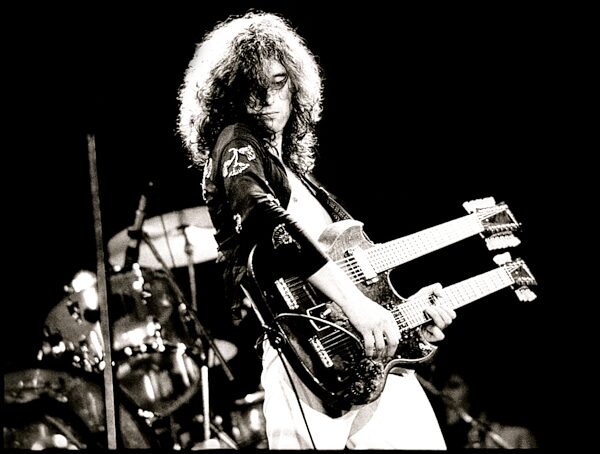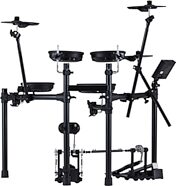Gibson Custom Historic Jimmy Page 1275 Vintage Original Spec Double Neck Electric Guitar (with Case)
No longer available at zZounds
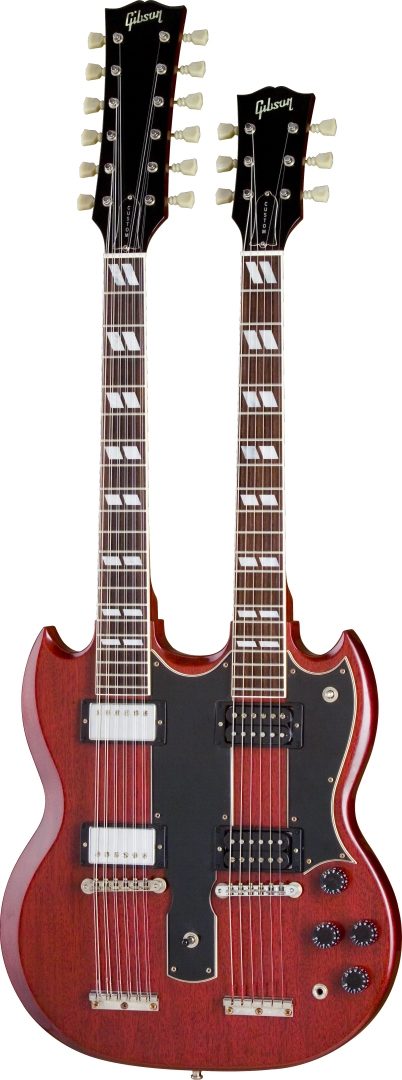
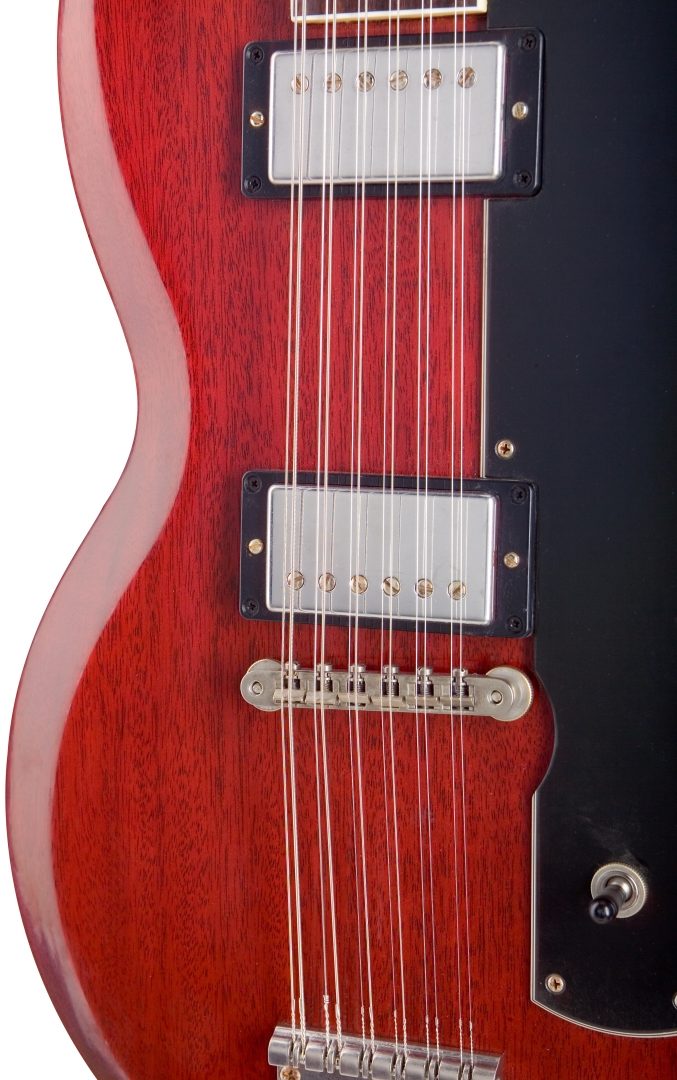
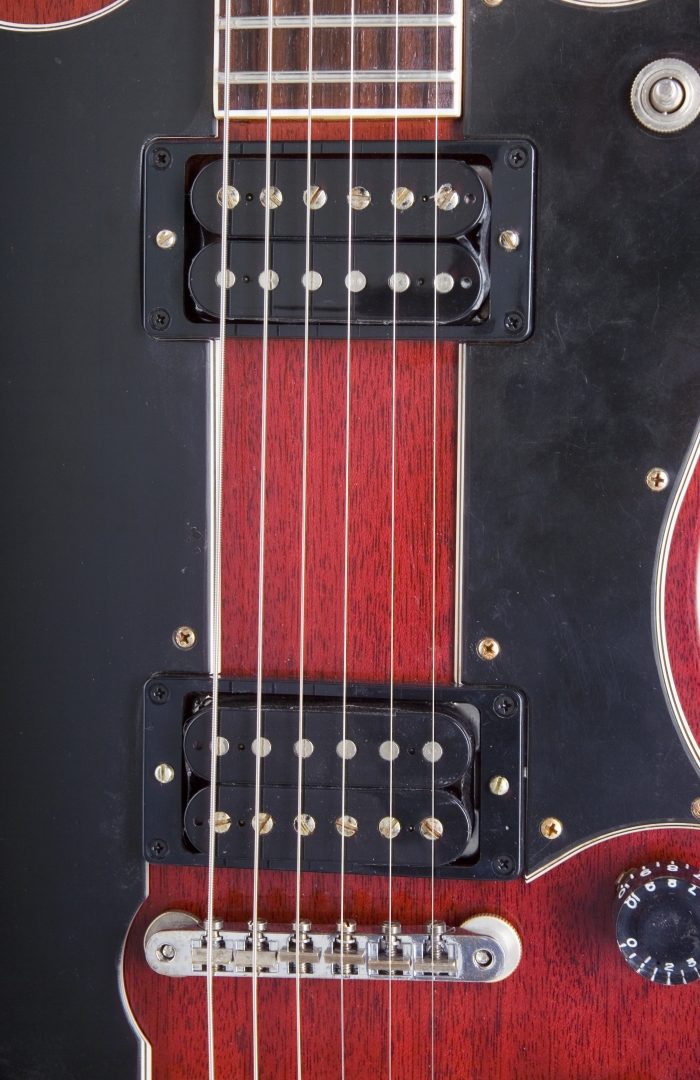
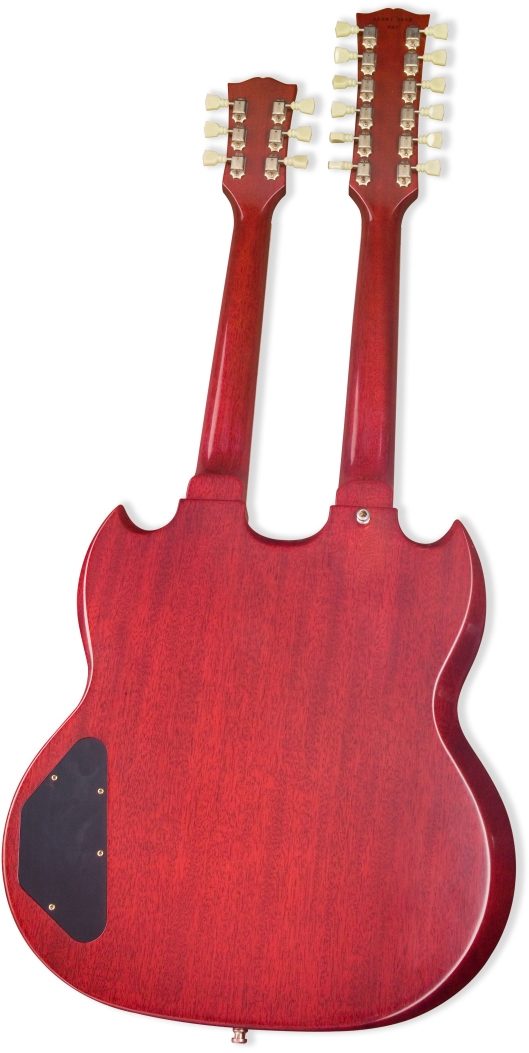
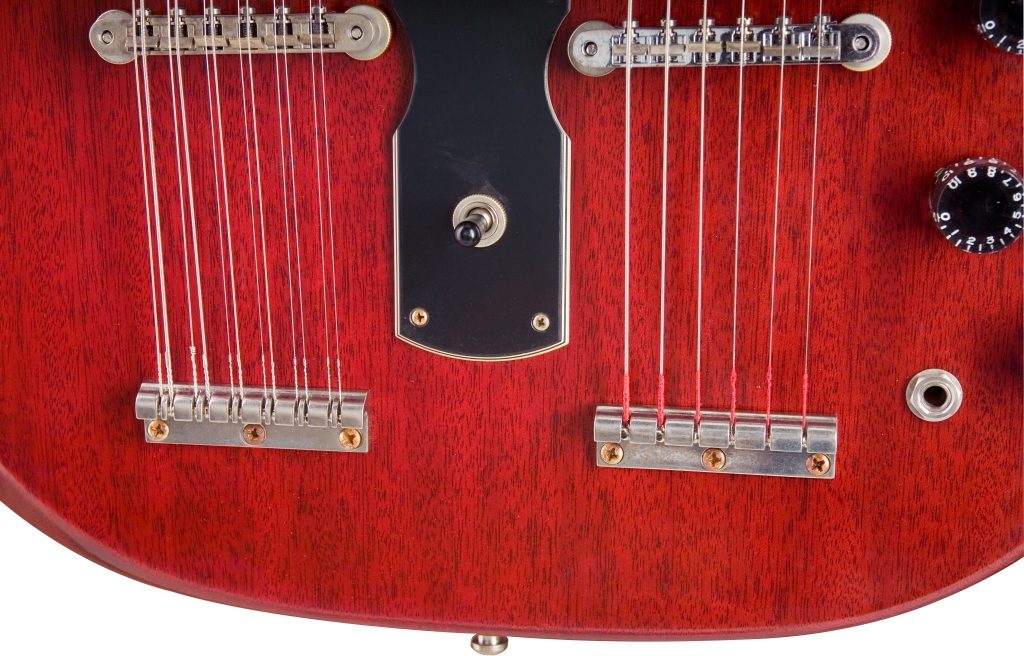

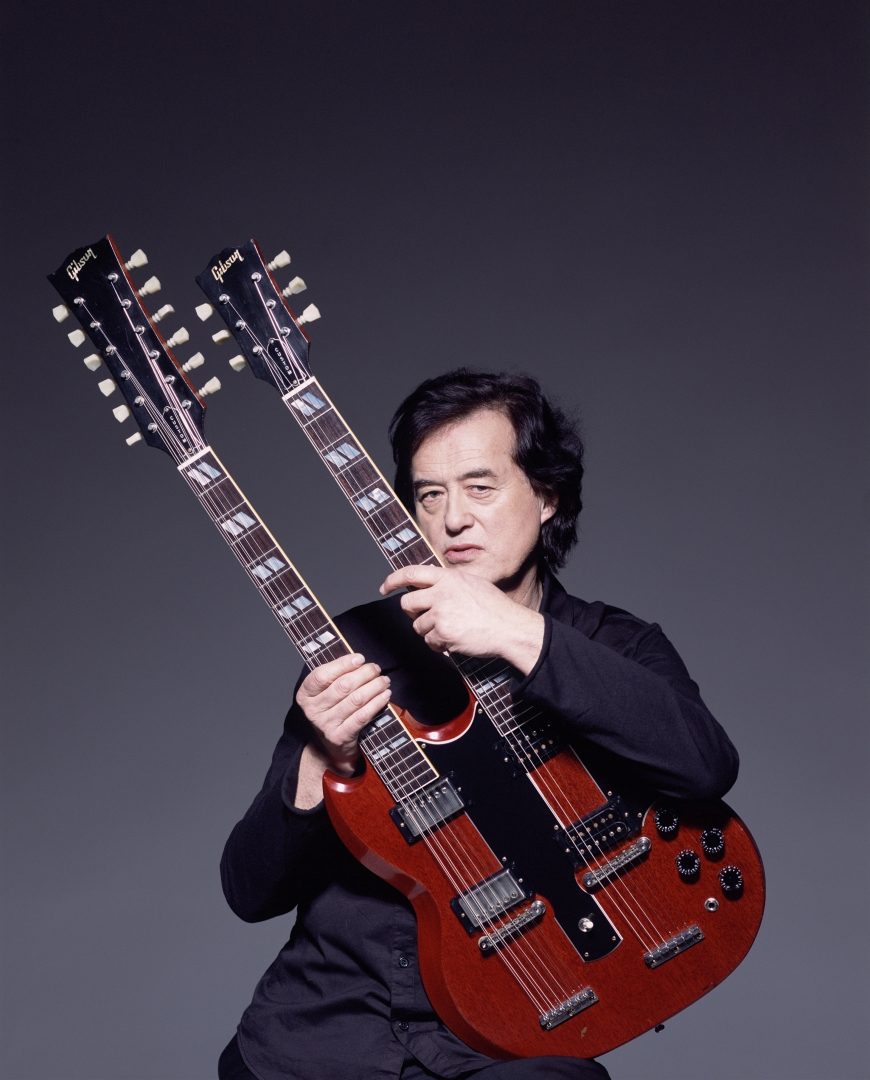
zZounds Gear Experts Say...
Vintage Original Spec version. Does not come with signature.
Overview
Some 30 years after the rock-defining heyday of Led Zeppelin, Gibson Custom is proud to present the Jimmy Page Signature Double Neck, a painstaking recreation of Jimmy's original '71 model. A fixture during live performances of one of the best loved songs of all time, "Stairway to Heaven," the Page Double Neck is a collector's item with maximum functionality. Crafted in the style of Jimmy's EDS-1275, the mahogany 6- and 12-string necks are outfitted with rosewood fingerboards. The body's period-correct mahogany is finished in a meticulously weathered dark Cherry and done up with chrome hardware and strap locks, a period-correct 5-ply pickguard, four Page pickups, and two volume and tone control knobs. A run of 250 Jimmy Page Signature Double Necks come with a Custom Shop case, certificate of authenticity, and custom care kit.
Whole Lotta Love: The History of the Gibson Double Neck
Even in 1958 -- the pivotal year that saw Gibson introduce such untraditional and innovative guitars as the Explorer, the Flying V, and the ES-335 -- the Gibson double neck was a sight to behold. Here was the unbelievable, wild possibility of the electric guitar for all to see. Though the revolutionary double-neck design was about utility and function -- offering the consummate stage guitarist two-instruments-in-one for versatility and ease of playing -- its looks signified pure, rock 'n' roll regality. The original Gibson double necks were produced in limited quantities, and have proven to be rare… read more finds in today's vintage marketplace.
In its first incarnation, the Made-to-order double neck was available in two models. The EDS-1275 Double 12 had what would become the most conventional twin-neck combination -- a 6-string and 12-string, while the more unusual EMS-1235 Double Mandolin had two 6-string necks, one on a short scale with its strings tuned an octave higher than a guitar, intended to reproduce a mandolin sound.
From 1958 to 1962, these hollowbody double necks were crafted with carved spruce tops and maple backs and sides, with twin pointed cutaways akin to the ES-175 model. In 1962, the EDS-1275 was reintroduced with a solid mahogany body, three-piece maple neck, and 20-fret rosewood fingerboard, so that it more closely resembled the new SG model.
This was the double neck that would write rock 'n' roll history in the hands of Jimmy Page, who used it to deliver the intricate studio arrangement of "Stairway to Heaven" to enraptured stadium crowds. During live performances of the epic, Page would alternate from the bottom 6-string for the delicate fingerpicking in the songs intro and verses, as well as the song's spiraling guitar solo, to the ringing 12-string for the song's bridge and lighter-raising final chorus. Only the double neck could provide a sound big enough for Led Zeppelin's biggest hit, and Page would keep it onstage to perform classics like "The Song Remains the Same" and "Rain Song."
An iconic symbol of rock 'n' roll's power and possibility, the double neck has always been a jewel in Gibson's crown, acting as both a tribute to incredible guitar building and historic guitar playing. Today, the tradition lives on with the release of the CUstom Shop's Jimmy Page Signature Double Neck, the pinnacle of the double necks offered by Gibson.
Biography
With his Les Paul Standard slung low and cranked up, Jimmy Page took the blues to the moon. One would be hard pressed to locate an example of hard rock guitar playing from the last three decades that hasn't been at least indirectly informed by the innovative style and technique of this incredible guitarist, producer, and songwriter. As teh founding visionary and leader of stadium gods Led Zeppelin, Page conjured thunderous riffs and dizzying solos that remain some of the most readily identifiable in contemporary music. Page is additionally known, not only for contributing his fretboard magic to the likes of the Yardbirds, Roy Harper, and the Firm, but also for a number of hits by dozens of artists that he performed session work for in the '60s.
James Patrick Page was born in the middle-class London suburb of Heston on January 9, 1944. He picked up his first guitar after hearing the great Scotty Moore on Elvis Presley's "Baby Let's Play House" at the age of 12. OUtside of his first few formal lessons, Page remained primarily self-educated. Inspired by rockabilly, blues, and folk, 14-year-old Page began busking and performing in a skiffle band. The following year, he dropped out of school to pursue a career in music -- backing beat poet Royston Ellis and vocalist Red E. Lewis before landing a gig recording and touring with Neil Christian and the Crusaders. Diagnosed with glandular fever after two years with Christian, he quit the band to pursue his interest in painting at Sutton Art College.
Before long Page was attending jam sessions and performing live with the Cyril Davies All Stars, Carter Lewis and the Southerners, and the Mickey Finn. Abandoning art school after only a year-and-a-half, Page began a rapid ascent to becoming one of the UK's most prolific session guitarists. His mid-1960s sonic alchemy can be heard on tracks by astoundingly diverse artists including Brenda Lee, Burt Bacharach, Dave Berry, Donovan, Herman's Hermits, the Kincks, Lulu, Marianne Faithful, the Nashville Teens, the Rolling Stones, Van Morrison and THem, and the Who. He also formed a brief compositional partnership with legendary songwriter Jackie DeShannon in 1965.
Still concerned about his health problems and reluctant to abandon his session work, Page turned down a couple of offers to replace Eric Clapton in the Yardbirds in 1964 and 1965. In 1966 he finally accepted the band's third offer -- playing bass at first, then moving over to the role of dual guitarist along with Jeff Beck, and, after Beck quit, becoming the sole guitarist. After the commercial failure of the Yardbirds' Little Games LP, and the subsequent departure of key members Keith Relf and Jim McCarty in 1968, Page recruited singer Robert Plant, drummer John Bonham, and session bassist/producer John Paul Jones to play the band's remaining Scandinavian gigs under the moniker "the New Yardbirds."
The New Yardbirds changed their name to Led Zeppelin and quickly began developing a much heavier, less pop-oriented, and more experimental take on the Yardbirds' blues-rock sound. They achieved overnight international success that only continued to balloon with their rapid-fire string of consecutive platinum records and sold-out tours into the mid-1970s. The first six classic albums are much more than collections of the individual masterpieces that we continue to hear on the radio today -- they're ambitious statements that, like the Beach Boys' Pet Sounds, the Beatles' Sgt. Pepper, and Love's Forever Changes, helped redefine the art of the LP.
Similarly, Jimmy Page's work on Led Zeppelin I-IV helped redefine the way rock guitar was played. Choosing a Gibson Les Paul, and the Gibson EDS-1275, the double-neck SG, through Marshall stacks, Page not only created an unparalleled warm crunchy tone, but experimented heavily with feedback, bowed guitar, wah-wah, and even the theremin. Beyond the massive sound and technical adventurism, Page invented some of rock 'n' roll's catchiest riffs and some of the genre's most impassioned and well-developed solos. In early Led Zeppelin, Page proved himself to be a rare guitar player's guitar player whose work also had mass appeal.
Led Zeppelin slowed down a bit in the next half of their career -- releasing four complete studio albums before screeching to a halt with the untimely and tragic death of drummer John Bonham in 1980. At this point Page retired from both studio and stage.
In 1982, Page re-emerged, recording the soundtrack to Death Wish; over the next couple years, he also provided the soundtracks to Death Wish II and III. In 1983 he returned to the stage for the A.R.M.S. (Action Research for Multiple Sclerosis) tour, which featured his first public performances alongside fellow Yardbirds guitarists Jeff Beck and Eric Clapton. The next year he reunited with Robert PLant and an all-start cast to form the Honeydrippers, a project that recorded covers of rock 'n' roll oldies. Also in 1984, he joined forces with Free/Bad Company vocalist Paul Rodgers for his first post-Led Zeppelin band, the Firm -- recording two albums and touring extensively. The surviving members of Led Zeppelin reunited for two concert spectacles: 1985's Live Aid and 1988's Atlantic Records' 25th Anniversary. Nineteen-eighty-eight also saw the release of Page's first solo album, Outrider. In 1993 he recorded a collaboration with David Coverdale of Deep Purple and Whitesnake fame, Coverdale/Page. He got back with Plant once again in 1994 to record and tour as Page and Plant for the remainder of the decade. Page concluded the 20th century by joining the Black Crowes for a tour and live album. Since the demise of Led Zeppelin, Page has also continued his career as a high-profile session musician with Plant, ROy Harper, the Rolling Stones, Sean "Diddy" Combs, and many more.
Today, Jimmy Page is almost universally regarded as one of hte most important rock guitarists of all time. Currently, the 63-year-old legend is heavily involved in charity work and in the process of recording a new solo album. He has also indicated the possibility of a future Led Zeppelin reunion -- rousing the hopes of millions of fans worldwide.
The Greatest Vintage Guitars Ever Made... Today
The Gibson Custom Shop proudly introduces the Vintage Original Spec series of historic solidbody guitars. From the 1957 Les Paul Junior to the 1960 Les Paul Standard, the Custom Shop debuts 17 reissue models representing the next step in their journey toward recreating the finest guitars ever made.
The Vintage Original Spec (VOS) series is the latest step on Gibson's journey toward perfection. When you pick up their '59 Les Paul Reissue -- or any of the VOS guitars -- you will experience the culmination of more than 20 years of effort to give you the look, feel, and sound of a $300,000 original.
They started with playability. Vintage Gibson guitars have a played in feel that is hard to describe and even harder to reproduce. But thanks to a combination of superior craftsmanship and newly implemented technology, Gibson is closer than ever to achieving that goal.
Their revolutionary process -- and the Custom Shop is the only major manufacturer using it -- ensures precise fret work and a perfectly cut nut on every guitar. Frets will be leveled, shaped, and crowned to exacting specifications -- often unique to each individual instrument -- and will extend a bit further towards the binding, giving you more surface area. The nut will be carefully hand-shaped to give it a more rounded, vintage look. The feel of the neck is also vitally important to a vintage guitar. For this reason, the VOS guitars will have neck profiles that accurately reflect the 3 key eras in Gibson's electric guitar history: early '50s, late '50s, and '60s. These necks will be a bit fuller, and together with a rolled fingerboard binding, will allow players to experience incredibly comfortable feel and playability.
The VOS series guitars will also provide a stunning visual experience. Using a proprietary process that includes unique steps for staining, wet-sanding, and hand-rubbing, the guitars reflect what a well cared for 40-year-old guitar looks like. The result is a remarkable patina that will delight even the most discriminating enthusiast. The hardware will also go through a new proprietary process, giving it a look one would expect to see after decades of natural oxidation. And finally, the edges of the neck heel and peghead will also be softened, lending the guitar a gently worn-in appearance and comfort.
As always with Gibson's Custom Shop guitars, you will experience an instrument that faithfully recreates their most sought-after classics -- down to the smallest details. Including:
1-piece, solid mahogany backs. Not book-matched or weight-relieved
Historically accurate neck tenon for superior sustain -- you can see it extending under the neck pick-up
Bumblebee capacitors (where applicable), and correct routing
Historically accurate reproductions of original PAF humbuckers
Tortoise dot markers on the side of the neck
ABR-1 bridge and lightweight aluminum stopbar tailpiece
Holly headstock veneer
Period-correct stain and filler
100% nitro-cellulose lacquer finishes -- no added plasticizers read less
Whole Lotta Love: The History of the Gibson Double Neck
Even in 1958 -- the pivotal year that saw Gibson introduce such untraditional and innovative guitars as the Explorer, the Flying V, and the ES-335 -- the Gibson double neck was a sight to behold. Here was the unbelievable, wild possibility of the electric guitar for all to see. Though the revolutionary double-neck design was about utility and function -- offering the consummate stage guitarist two-instruments-in-one for versatility and ease of playing -- its looks signified pure, rock 'n' roll regality. The original Gibson double necks were produced in limited quantities, and have proven to be rare… read more finds in today's vintage marketplace.
In its first incarnation, the Made-to-order double neck was available in two models. The EDS-1275 Double 12 had what would become the most conventional twin-neck combination -- a 6-string and 12-string, while the more unusual EMS-1235 Double Mandolin had two 6-string necks, one on a short scale with its strings tuned an octave higher than a guitar, intended to reproduce a mandolin sound.
From 1958 to 1962, these hollowbody double necks were crafted with carved spruce tops and maple backs and sides, with twin pointed cutaways akin to the ES-175 model. In 1962, the EDS-1275 was reintroduced with a solid mahogany body, three-piece maple neck, and 20-fret rosewood fingerboard, so that it more closely resembled the new SG model.
This was the double neck that would write rock 'n' roll history in the hands of Jimmy Page, who used it to deliver the intricate studio arrangement of "Stairway to Heaven" to enraptured stadium crowds. During live performances of the epic, Page would alternate from the bottom 6-string for the delicate fingerpicking in the songs intro and verses, as well as the song's spiraling guitar solo, to the ringing 12-string for the song's bridge and lighter-raising final chorus. Only the double neck could provide a sound big enough for Led Zeppelin's biggest hit, and Page would keep it onstage to perform classics like "The Song Remains the Same" and "Rain Song."
An iconic symbol of rock 'n' roll's power and possibility, the double neck has always been a jewel in Gibson's crown, acting as both a tribute to incredible guitar building and historic guitar playing. Today, the tradition lives on with the release of the CUstom Shop's Jimmy Page Signature Double Neck, the pinnacle of the double necks offered by Gibson.
Biography
With his Les Paul Standard slung low and cranked up, Jimmy Page took the blues to the moon. One would be hard pressed to locate an example of hard rock guitar playing from the last three decades that hasn't been at least indirectly informed by the innovative style and technique of this incredible guitarist, producer, and songwriter. As teh founding visionary and leader of stadium gods Led Zeppelin, Page conjured thunderous riffs and dizzying solos that remain some of the most readily identifiable in contemporary music. Page is additionally known, not only for contributing his fretboard magic to the likes of the Yardbirds, Roy Harper, and the Firm, but also for a number of hits by dozens of artists that he performed session work for in the '60s.
James Patrick Page was born in the middle-class London suburb of Heston on January 9, 1944. He picked up his first guitar after hearing the great Scotty Moore on Elvis Presley's "Baby Let's Play House" at the age of 12. OUtside of his first few formal lessons, Page remained primarily self-educated. Inspired by rockabilly, blues, and folk, 14-year-old Page began busking and performing in a skiffle band. The following year, he dropped out of school to pursue a career in music -- backing beat poet Royston Ellis and vocalist Red E. Lewis before landing a gig recording and touring with Neil Christian and the Crusaders. Diagnosed with glandular fever after two years with Christian, he quit the band to pursue his interest in painting at Sutton Art College.
Before long Page was attending jam sessions and performing live with the Cyril Davies All Stars, Carter Lewis and the Southerners, and the Mickey Finn. Abandoning art school after only a year-and-a-half, Page began a rapid ascent to becoming one of the UK's most prolific session guitarists. His mid-1960s sonic alchemy can be heard on tracks by astoundingly diverse artists including Brenda Lee, Burt Bacharach, Dave Berry, Donovan, Herman's Hermits, the Kincks, Lulu, Marianne Faithful, the Nashville Teens, the Rolling Stones, Van Morrison and THem, and the Who. He also formed a brief compositional partnership with legendary songwriter Jackie DeShannon in 1965.
Still concerned about his health problems and reluctant to abandon his session work, Page turned down a couple of offers to replace Eric Clapton in the Yardbirds in 1964 and 1965. In 1966 he finally accepted the band's third offer -- playing bass at first, then moving over to the role of dual guitarist along with Jeff Beck, and, after Beck quit, becoming the sole guitarist. After the commercial failure of the Yardbirds' Little Games LP, and the subsequent departure of key members Keith Relf and Jim McCarty in 1968, Page recruited singer Robert Plant, drummer John Bonham, and session bassist/producer John Paul Jones to play the band's remaining Scandinavian gigs under the moniker "the New Yardbirds."
The New Yardbirds changed their name to Led Zeppelin and quickly began developing a much heavier, less pop-oriented, and more experimental take on the Yardbirds' blues-rock sound. They achieved overnight international success that only continued to balloon with their rapid-fire string of consecutive platinum records and sold-out tours into the mid-1970s. The first six classic albums are much more than collections of the individual masterpieces that we continue to hear on the radio today -- they're ambitious statements that, like the Beach Boys' Pet Sounds, the Beatles' Sgt. Pepper, and Love's Forever Changes, helped redefine the art of the LP.
Similarly, Jimmy Page's work on Led Zeppelin I-IV helped redefine the way rock guitar was played. Choosing a Gibson Les Paul, and the Gibson EDS-1275, the double-neck SG, through Marshall stacks, Page not only created an unparalleled warm crunchy tone, but experimented heavily with feedback, bowed guitar, wah-wah, and even the theremin. Beyond the massive sound and technical adventurism, Page invented some of rock 'n' roll's catchiest riffs and some of the genre's most impassioned and well-developed solos. In early Led Zeppelin, Page proved himself to be a rare guitar player's guitar player whose work also had mass appeal.
Led Zeppelin slowed down a bit in the next half of their career -- releasing four complete studio albums before screeching to a halt with the untimely and tragic death of drummer John Bonham in 1980. At this point Page retired from both studio and stage.
In 1982, Page re-emerged, recording the soundtrack to Death Wish; over the next couple years, he also provided the soundtracks to Death Wish II and III. In 1983 he returned to the stage for the A.R.M.S. (Action Research for Multiple Sclerosis) tour, which featured his first public performances alongside fellow Yardbirds guitarists Jeff Beck and Eric Clapton. The next year he reunited with Robert PLant and an all-start cast to form the Honeydrippers, a project that recorded covers of rock 'n' roll oldies. Also in 1984, he joined forces with Free/Bad Company vocalist Paul Rodgers for his first post-Led Zeppelin band, the Firm -- recording two albums and touring extensively. The surviving members of Led Zeppelin reunited for two concert spectacles: 1985's Live Aid and 1988's Atlantic Records' 25th Anniversary. Nineteen-eighty-eight also saw the release of Page's first solo album, Outrider. In 1993 he recorded a collaboration with David Coverdale of Deep Purple and Whitesnake fame, Coverdale/Page. He got back with Plant once again in 1994 to record and tour as Page and Plant for the remainder of the decade. Page concluded the 20th century by joining the Black Crowes for a tour and live album. Since the demise of Led Zeppelin, Page has also continued his career as a high-profile session musician with Plant, ROy Harper, the Rolling Stones, Sean "Diddy" Combs, and many more.
Today, Jimmy Page is almost universally regarded as one of hte most important rock guitarists of all time. Currently, the 63-year-old legend is heavily involved in charity work and in the process of recording a new solo album. He has also indicated the possibility of a future Led Zeppelin reunion -- rousing the hopes of millions of fans worldwide.
The Greatest Vintage Guitars Ever Made... Today
The Gibson Custom Shop proudly introduces the Vintage Original Spec series of historic solidbody guitars. From the 1957 Les Paul Junior to the 1960 Les Paul Standard, the Custom Shop debuts 17 reissue models representing the next step in their journey toward recreating the finest guitars ever made.
The Vintage Original Spec (VOS) series is the latest step on Gibson's journey toward perfection. When you pick up their '59 Les Paul Reissue -- or any of the VOS guitars -- you will experience the culmination of more than 20 years of effort to give you the look, feel, and sound of a $300,000 original.
They started with playability. Vintage Gibson guitars have a played in feel that is hard to describe and even harder to reproduce. But thanks to a combination of superior craftsmanship and newly implemented technology, Gibson is closer than ever to achieving that goal.
Their revolutionary process -- and the Custom Shop is the only major manufacturer using it -- ensures precise fret work and a perfectly cut nut on every guitar. Frets will be leveled, shaped, and crowned to exacting specifications -- often unique to each individual instrument -- and will extend a bit further towards the binding, giving you more surface area. The nut will be carefully hand-shaped to give it a more rounded, vintage look. The feel of the neck is also vitally important to a vintage guitar. For this reason, the VOS guitars will have neck profiles that accurately reflect the 3 key eras in Gibson's electric guitar history: early '50s, late '50s, and '60s. These necks will be a bit fuller, and together with a rolled fingerboard binding, will allow players to experience incredibly comfortable feel and playability.
The VOS series guitars will also provide a stunning visual experience. Using a proprietary process that includes unique steps for staining, wet-sanding, and hand-rubbing, the guitars reflect what a well cared for 40-year-old guitar looks like. The result is a remarkable patina that will delight even the most discriminating enthusiast. The hardware will also go through a new proprietary process, giving it a look one would expect to see after decades of natural oxidation. And finally, the edges of the neck heel and peghead will also be softened, lending the guitar a gently worn-in appearance and comfort.
As always with Gibson's Custom Shop guitars, you will experience an instrument that faithfully recreates their most sought-after classics -- down to the smallest details. Including:
1-piece, solid mahogany backs. Not book-matched or weight-relieved
Historically accurate neck tenon for superior sustain -- you can see it extending under the neck pick-up
Bumblebee capacitors (where applicable), and correct routing
Historically accurate reproductions of original PAF humbuckers
Tortoise dot markers on the side of the neck
ABR-1 bridge and lightweight aluminum stopbar tailpiece
Holly headstock veneer
Period-correct stain and filler
100% nitro-cellulose lacquer finishes -- no added plasticizers read less
Specs
Body & Hardware
Period-correct solid mahogany SG-style body
Dark Cherry finish with walnut filler
Chrome hardware
Chrome ABR bridge with chrome thumbwheels
Schaller Strap Locks (chrome)
Period-correct 5-ply pickguard
Neck & Headstock
One-piece mahogany necks
20-fret rosewood fingerboard
Corian nut
Period-correct headstock style for 12-string
Page profile neck
24-3/4 in. scale length, 1-11/16 in. nut width for 6-string, 1.715 in. for 12-string
Push-in bushings, double band nickel plate tuners
Page fretwire
Electronics & Strings
Page pickups
Black speed knobs with dial
Collateral Package
Jimmy Page Signature Double Neck VOS comes with standard Certificate of Authenticity
Period-correct solid mahogany SG-style body
Dark Cherry finish with walnut filler
Chrome hardware
Chrome ABR bridge with chrome thumbwheels
Schaller Strap Locks (chrome)
Period-correct 5-ply pickguard
Neck & Headstock
One-piece mahogany necks
20-fret rosewood fingerboard
Corian nut
Period-correct headstock style for 12-string
Page profile neck
24-3/4 in. scale length, 1-11/16 in. nut width for 6-string, 1.715 in. for 12-string
Push-in bushings, double band nickel plate tuners
Page fretwire
Electronics & Strings
Page pickups
Black speed knobs with dial
Collateral Package
Jimmy Page Signature Double Neck VOS comes with standard Certificate of Authenticity
No longer available at zZounds
In most cases, a product is unavailable because it has been discontinued by the manufacturer
This is a carousel with product cards. Use the previous and next buttons to navigate.





